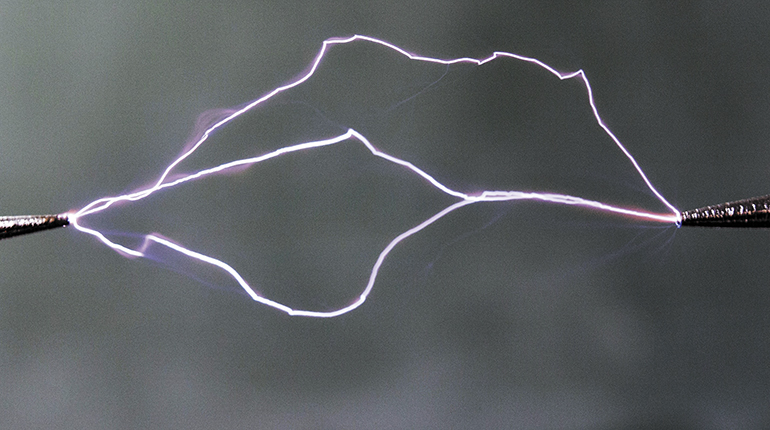Electromagnetism textbook bridges the gap between basic and advanced
DOI: 10.1063/PT.3.4230
Several widely adopted physics textbooks in electricity and magnetism are available for undergraduates; they include Introduction to Electrodynamics by David Griffiths (4th edition, 2017) and Electricity and Magnetism by Edward Purcell and David Morin (3rd edition, 2013). For instructors and students hoping to supplement those books with a mathematically concise treatment, however, Introduction to Electricity and Magnetism by John Dirk Walecka would be a good companion text. A succinct treatment of the major topics in the field, it provides a bridge between basic and advanced textbooks.

ROMESIS PANTELEIMON, CC BY-SA 4.0

Walecka is a well-known nuclear theorist and author of several undergraduate and graduate textbooks in nuclear physics, modern physics, and general relativity. Introduction to Electricity and Magnetism is divided into three sections and seamlessly transitions from electricity to magnetism and then to Maxwell’s equations. Each section ends with a summary chapter of major concepts, a feature that readers will likely find useful. The assumption that the reader has already studied introductory classical mechanics and vector calculus enables Walecka to tackle more sophisticated mathematics than most introductions to the subject.
The first section covers the fundamentals of electricity, including Coulomb’s law and electric fields, Gauss’s law, electrostatic potential and energy, capacitors, and Ohm’s law and circuits. Before moving on to topics in magnetism, Walecka gives a brief review of vectors, differential operators, and the Stokes theorem. Any reader wanting to review those topics will find the summaries a welcome feature.

The second section provides a good treatment of magnetism that covers magnetic force and fields, Ampere’s law, induction, magnetic materials, and time-dependent circuits. Walecka constructs an analogy between electric fields and magnetic fields that is a nice segue between the first and second sections. He also incorporates illustrative examples throughout the book. For instance, when he introduces Ampere’s law, he provides three excellent applications of it: magnetic fields due to an infinite sheet of currents, two opposite sheets, and an infinite solenoid. All three help readers grapple with what is often a challenging concept.
The third and final section of the book engages with Maxwell’s equations. Walecka does a fine job of explaining how the incompleteness of Ampere’s law prompts the need for Maxwell’s equations. Additionally, the equations are expressed in both integral and differential forms, and Walecka shows the reader how to derive the electromagnetic wave equation from Maxwell’s equations in a clear and intuitive way. The book concludes with a chapter on special relativity that will inspire readers to learn more about that topic.
The book’s brevity helps readers see how seemingly different topics in electricity and magnetism connect with one another. The notations and illustrations are visually appealing and uncluttered. Moreover, the softcover book is affordable compared with most textbooks, a feature that students will surely appreciate.
Although the book’s conciseness is a strength, it is also in some ways a weakness. Some readers may find Introduction to Electricity and Magnetism a bit formal and abstract. Diligent readers who are looking for conceptual explanations may need to refer to one of the introductory texts mentioned earlier. There are homework problems at the back of Walecka’s book, but they are often not of a sufficient number for students to learn the material comprehensively. Additionally, readers may find themselves lost in the numerous derivations because the book does not refer to many real-life applications. Students new to a field often find real-life examples particularly illuminating, and I found myself wishing they had been included in the text.
Overall, Introduction to Electricity and Magnetism is an excellent, concise introduction to the topic. It presents mathematical treatments of abstract concepts in a clear and straightforward way. I think it will be most effective as a companion to other excellent introductory texts, but readers who want to review the material will find Walecka’s treatment of electricity and magnetism refreshing.
More about the Authors
Savan Kharel is a theoretical physicist working at the intersection of particle physics, cosmology, and gravity. He is currently investigating perturbative structures of quantum field theory in flat and curved spacetimes. He is a passionate teacher who loves to inspire students to explore the richness of physics.
Savan Kharel. Williams College, Williamstown, Massachusetts.
